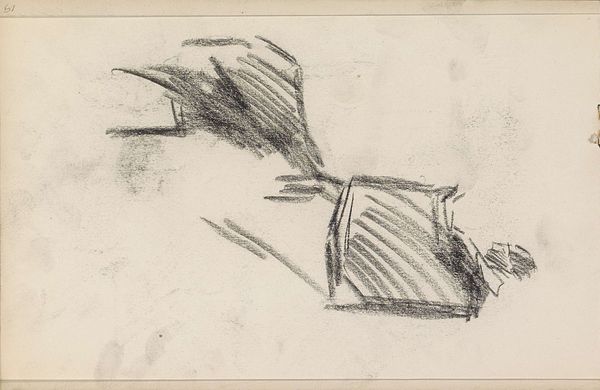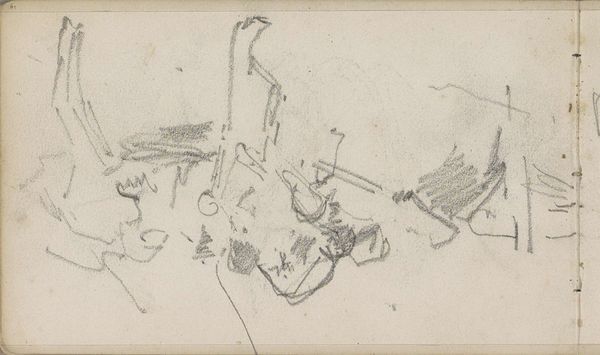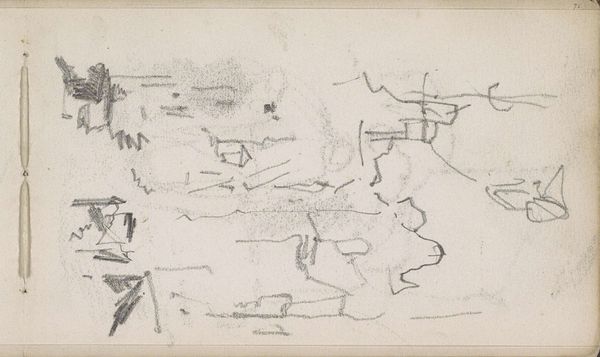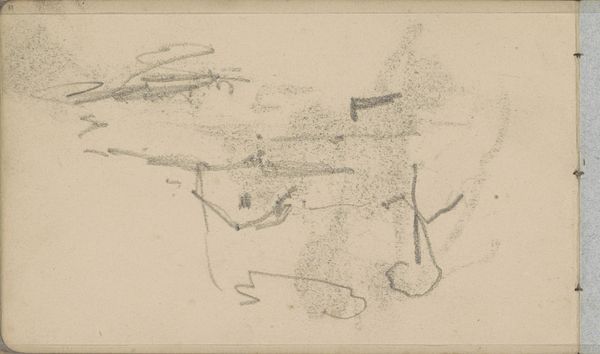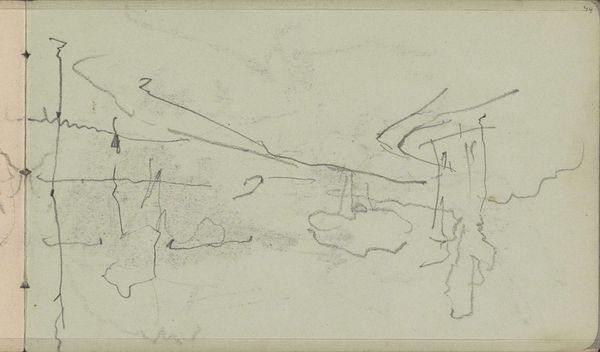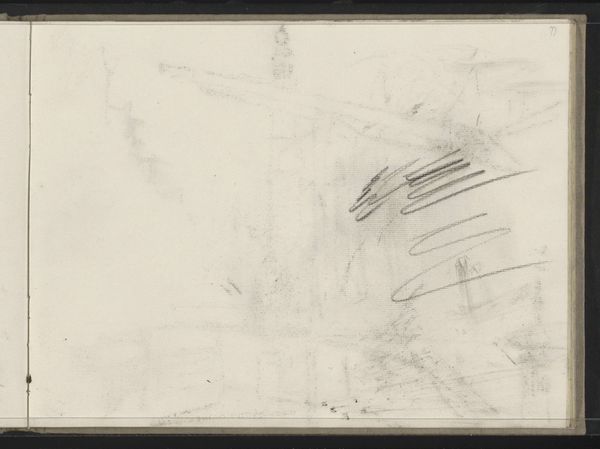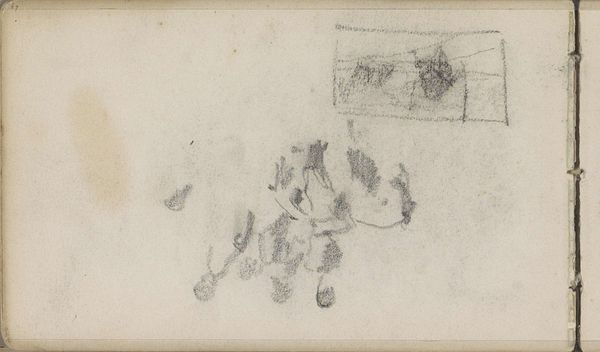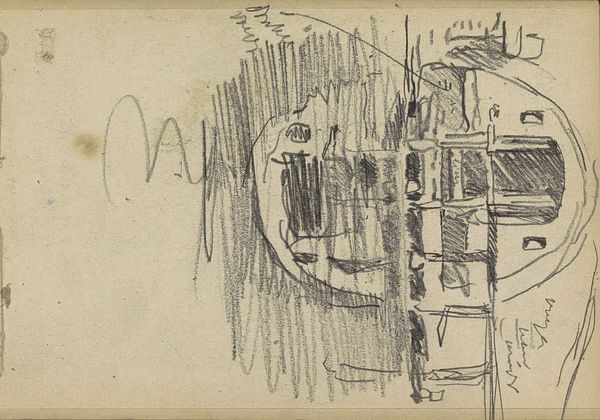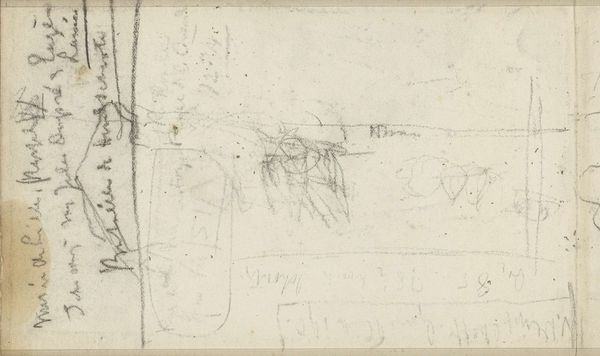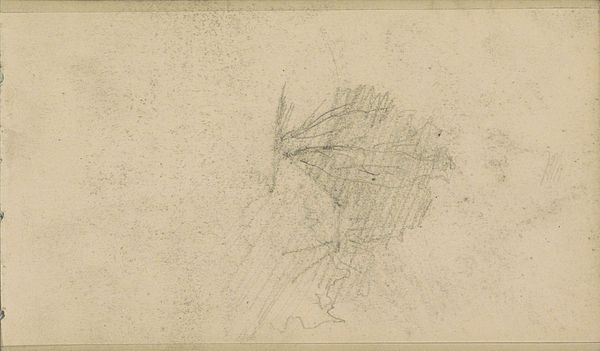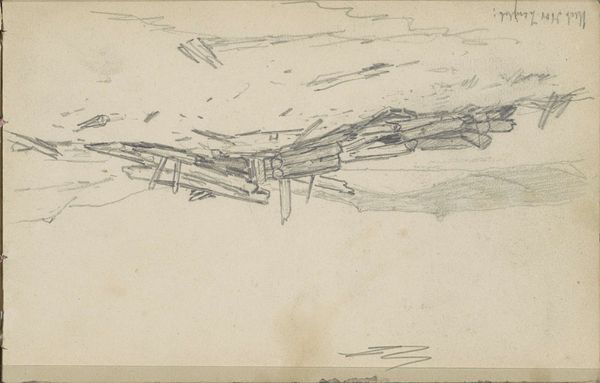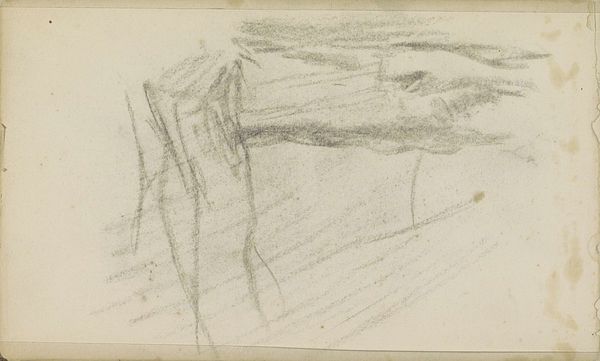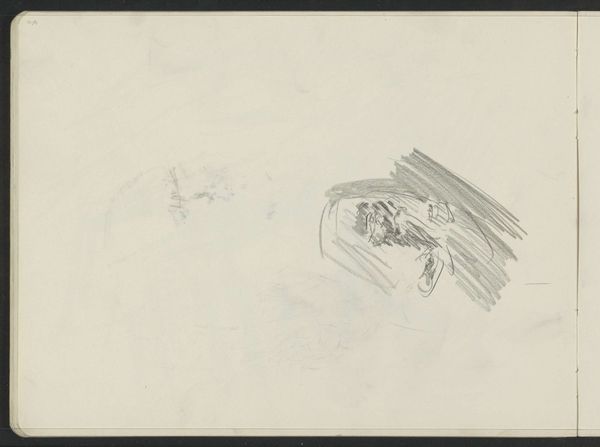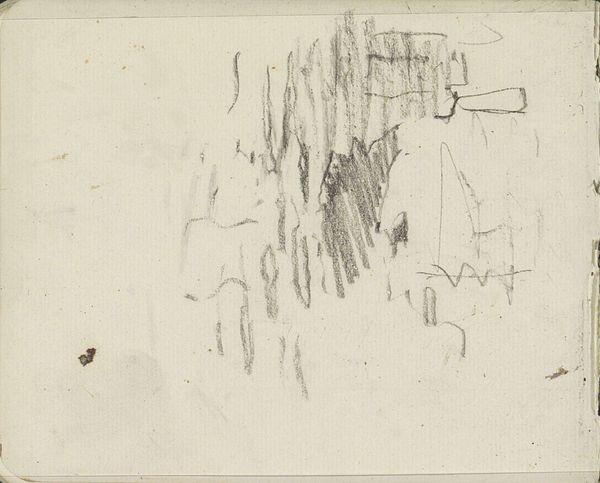
drawing, pencil, architecture
#
drawing
#
impressionism
#
landscape
#
pencil
#
architecture
Copyright: Rijks Museum: Open Domain
Curator: Here we have "Huizen," a pencil drawing by George Hendrik Breitner, dating from around 1881-1883. It’s currently held at the Rijksmuseum. The houses depicted emerge almost like specters on the page, their forms loosely rendered with hasty strokes of pencil. Editor: There's a profound sense of loneliness here, isn’t there? The stark simplicity, the bare minimum needed to convey form. The weight of that grey sky... it feels oppressive. It whispers of alienation within rapidly changing urban landscapes. Curator: It's important to situate Breitner within the context of late 19th-century Amsterdam, a period of intense urbanization and social stratification. His choice of subject matter and his technique – capturing fleeting moments and gritty realities – challenges idealized representations of urban life and reflects the experience of marginalized communities. Editor: You see, even the simple shapes have stories. Look at the upward thrusting lines contrasted by dense, shadowed masses. There is an imposing feeling, something looming like the shadow of industrialism itself. The houses are barely houses - sketches or perhaps metaphors. Curator: Precisely. He’s engaging with architectural themes here in a time of intense cultural critique surrounding issues of urban housing, hygiene, and morality. There were large and deeply class-stratified neighborhoods growing during the end of the industrial age and the rise of national states. Editor: Do you think the starkness has some precedent? Almost like religious parables for what awaits societies divorced from what some consider virtue, and too enamored by production and materialism. Curator: The sketch's aesthetic undeniably serves Breitner’s message, prompting viewers to reflect on the human cost of progress and question the narratives that celebrate it uncritically. The loose handling may be an index of broader unease towards cultural anxieties and class tensions. Editor: A starkly human document that serves as a kind of memory of those that inhabit these spaces, giving presence and absence in equal measure, with some shapes merely gestured at, becoming placeholders in urban amnesia. The visual simplicity becomes a place for us to think on who these homes contained. Curator: By drawing our attention to the transient and marginalized elements of Amsterdam’s urban landscape, Breitner compels us to confront uncomfortable truths about inequality and social exclusion. Editor: Indeed, it’s in its stark simplicity that its power resides, echoing across time and asking us to see these rough shapes as something holding so much weight from the past and holding valuable cultural lessons for us today.
Comments
No comments
Be the first to comment and join the conversation on the ultimate creative platform.
